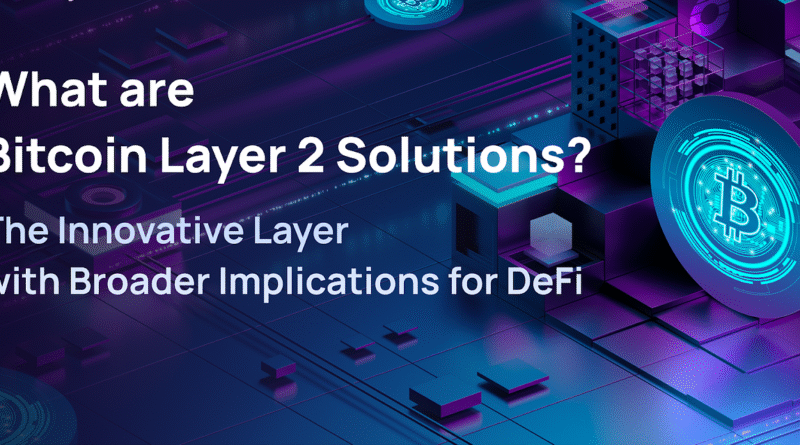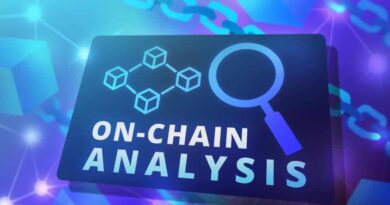Top Bitcoin Layer-2 Solutions Bringing DeFi to BTC
Introduction
Bitcoin, the pioneer of cryptocurrencies, is renowned for its security and decentralization but has historically lagged in supporting complex decentralized finance (DeFi) applications due to its limited scripting capabilities. Layer-2 (L2) solutions are transforming Bitcoin by enabling smart contracts, faster transactions, and lower fees, unlocking DeFi potential while leveraging Bitcoin’s robust security. In 2025, Bitcoin L2s are driving a new era of financial innovation. This article explores the top Bitcoin Layer-2 solutions powering DeFi, their features, and their impact on the ecosystem.
What Are Bitcoin Layer-2 Solutions?
Bitcoin Layer-2 solutions are secondary protocols built on top of the Bitcoin blockchain (Layer-1) to enhance scalability, reduce transaction costs, and introduce advanced functionalities like smart contracts. By processing transactions off-chain and settling them on Bitcoin’s mainnet, L2s alleviate network congestion while maintaining security. These solutions are crucial for enabling DeFi applications such as lending, borrowing, trading, and yield farming, bringing Bitcoin closer to Ethereum’s programmable ecosystem.
Top Bitcoin Layer-2 Solutions for DeFi
Below are the leading Bitcoin L2 projects driving DeFi adoption, with their unique features and contributions:
Stacks is a prominent Bitcoin L2 that introduces smart contracts and decentralized applications (dApps) to the Bitcoin ecosystem.
- Key Features:
- Proof of Transfer (PoX): Miners lock Bitcoin to secure the Stacks network, rewarding participants with BTC yields, fostering DeFi integration.
- Clarity Language: A secure, predictable programming language for smart contracts, enabling DeFi protocols like lending and decentralized exchanges (DEXs).
- Ecosystem: Hosts dApps like ALEX (a DEX with $100 million TVL) and Arkadiko for lending and stablecoins.
- sBTC: A Bitcoin-pegged asset for trustless DeFi transactions, enabling BTC-backed lending and trading.
- DeFi Impact: Stacks enables Bitcoin holders to earn yields through staking and participate in DeFi without leaving the Bitcoin ecosystem. Its 2025 Nakamoto Release enhances transaction speed to ~5 seconds, rivaling Ethereum L2s.
- TVL: Over $1 billion in 2025, reflecting strong DeFi adoption.
- Rootstock (RSK)
Rootstock is a sidechain that brings Ethereum-compatible smart contracts to Bitcoin, focusing on DeFi and interoperability.
- Key Features:
- Merged Mining: Over 50% of Bitcoin’s hash power secures RSK, ensuring robust security for DeFi applications.
- RBTC: Bitcoin-pegged token for smart contract execution, enabling DeFi protocols like Sovryn for lending and trading.
- RSK Infrastructure Framework (RIF): Supports DeFi services like liquidity pools, stablecoins, and token swaps.e l
- Ethereum Bridge: Allows Ethereum dApps to operate on RSK, enhancing interoperability.
- DeFi Impact: RSK hosts nearly 3,000 BTC in liquidity, powering DeFi platforms with ~$500 million TVL. Its $2.5 million grant program in 2023 spurred DeFi development.
- 2025 Outlook: RSK’s focus on institutional DeFi and real-world asset (RWA) tokenization expands Bitcoin’s financial utility.
The Lightning Network is Bitcoin’s most established L2, designed for fast, low-cost transactions, with growing DeFi applications.
- Key Features:
- State Channels: Enable off-chain microtransactions with near-instant confirmation and fees as low as $0.01.
- DeFi Use Cases: Supports atomic swaps and payment channels for decentralized trading and micropayment-based lending.
- Adoption: Used by exchanges like Kraken for instant BTC transfers, enabling DeFi liquidity.
- DeFi Impact: While primarily a payment solution, Lightning’s integration with platforms like ALEX enables trustless swaps, laying the groundwork for DeFi. Its scalability supports ~1 million TPS, ideal for high-frequency DeFi transactions.
- 2025 Outlook: Enhanced smart contract support via projects like LumiBit expands Lightning’s DeFi potential.
Merlin Chain, launched by Bitmap Tech, is a ZK-rollup-based L2 focused on DeFi, NFTs, and gaming.
- Key Features:
- ZK-Rollup Technology: Uses zero-knowledge proofs for secure, scalable transactions with low fees (~$0.05).
- Decentralized Oracle Network: Integrates real-world data for DeFi applications like yield farming and derivatives.
- Ecosystem: Supports dApps for DeFi (e.g., Merlin DEX), NFTs, and SocialFi, with $1.57 billion fully diluted valuation.
- DeFi Impact: Merlin’s focus on native BTC assets enables seamless DeFi participation, with protocols for lending and staking gaining traction.
- 2025 Outlook: Merlin’s integration with BRC-20 tokens and AI-driven dApps positions it as a versatile DeFi hub.
- BSquared Network (B² Network)
BSquared Network is an EVM-compatible L2 that leverages ZK-rollups to bring scalable DeFi to Bitcoin.
- Key Features:
- B² Rollup: The first Bitcoin rollup with ZK-proof verification, ensuring secure and efficient transactions.
- B² Hub: A data availability layer enhancing DeFi scalability and reducing costs.
- EVM Compatibility: Supports Ethereum-based DeFi tools, enabling developers to port dApps like Uniswap.
- DeFi Impact: BSquared’s low-cost transactions (~$0.10) and support for BRC-20 tokens make it ideal for DeFi protocols like AMMs and liquidity pools. Its $174 million VC funding in 2024 fuels ecosystem growth.
- 2025 Outlook: BSquared’s focus on BTC-denominated yield products attracts wrapped BTC users to native Bitcoin DeFi.
How These L2s Enable DeFi on Bitcoin
Bitcoin L2s facilitate DeFi by:
- Smart Contract Functionality: Stacks, Rootstock, and BSquared introduce Ethereum-like smart contracts, enabling lending, borrowing, and trading.
- Scalability: Rollups (Merlin, BSquared) and state channels (Lightning) process thousands of TPS, supporting high-volume DeFi activity.
- Low Fees: Fees on L2s are often 100x lower than Bitcoin’s mainnet, making microtransactions and yield farming viable.
- Interoperability: Bridges to Ethereum (e.g., RSK’s Ethereum bridge) and cross-L2 solutions (e.g., BitVM) enhance liquidity and dApp composability.
- Security: L2s inherit Bitcoin’s security via final settlement on the mainnet, ensuring trustless DeFi operations.
Challenges and Considerations
While Bitcoin L2s are advancing DeFi, challenges remain:
- Complexity: L2s like Stacks and Rootstock introduce learning curves for users unfamiliar with smart contracts.
- Security Risks: Smart contracts on newer L2s may lack Ethereum’s rigorous testing, requiring robust audits.
- Liquidity: Bitcoin L2s have lower liquidity (~$2 billion total TVL) compared to Ethereum L2s ($42 billion), limiting DeFi scale.
- Centralization: Some L2s rely on centralized sequencers or bridges, though projects like BSquared are decentralizing operations.
- Regulatory Uncertainty: DeFi on Bitcoin must navigate evolving regulations, particularly for institutional adoption.
The Future of DeFi on Bitcoin in 2025
In 2025, Bitcoin L2s are poised to redefine BTC’s role beyond “digital gold”:
- BTC-Denominated DeFi: Projects like Stacks and BSquared enable native BTC use in DeFi, reducing reliance on wrapped BTC (e.g., WBTC).
- Ecosystem Growth: Over 75 Bitcoin L2s exist, with $447 million in VC funding since 2018, driving DeFi innovation.
- Institutional Adoption: Rootstock’s RWA focus and Elastos’ trustless lending attract institutional players.
- Ordinals and BRC-20: The rise of Bitcoin-native tokens (BRC-20, ARC-20) fuels DeFi activity on L2s like Dovi and Merlin.
- Interoperability: Solutions like BitVM and cross-chain bridges (e.g., Zulu’s BitVM2) enhance DeFi composability.
Conclusion
Bitcoin Layer-2 solutions like Stacks, Rootstock, Lightning Network, Merlin Chain, and BSquared Network are unlocking DeFi’s potential on the world’s most secure blockchain. By enabling smart contracts, reducing fees, and scaling transactions, these L2s make BTC a viable platform for lending, trading, and yield farming. Despite challenges like liquidity and complexity, the rapid growth of Bitcoin L2s in 2025 signals a shift toward a programmable, DeFi-powered Bitcoin ecosystem. For crypto investors and enthusiasts, exploring these L2s offers a chance to engage with Bitcoin’s evolving financial landscape.




